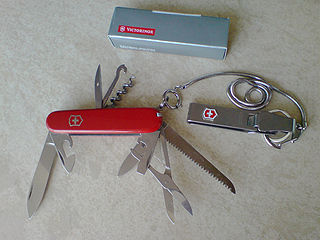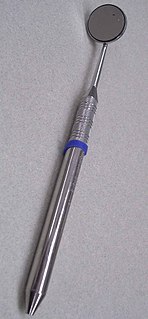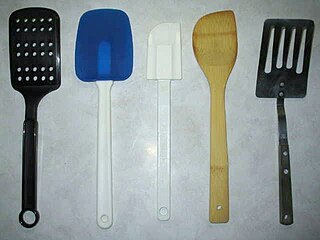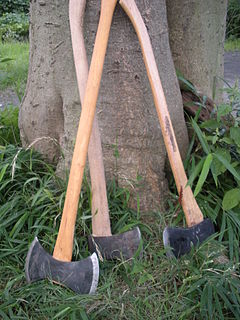Pipe(s) or PIPE(S) may refer to:

A tobacco pipe, often called simply a pipe, is a device specifically made to smoke tobacco. It comprises a chamber for the tobacco from which a thin hollow stem (shank) emerges, ending in a mouthpiece. Pipes can range from very simple machine-made briar models to highly prized hand-made artisanal implements made by renowned pipemakers, which are often very expensive collector's items. Pipe smoking is the oldest known traditional form of tobacco smoking.

A bong is a filtration device generally used for smoking cannabis, tobacco, or other herbal substances. In the bong shown in the photo, the gas flows from the lower port on the left to the upper port on the right.

A reed is a thin strip of material that vibrates to produce a sound on a musical instrument. Most woodwind instrument reeds are made from Arundo donax or synthetic material. Tuned reeds are made of metal or synthetics. Musical instruments are classified according to the type and number of reeds.
Hornbostel–Sachs or Sachs–Hornbostel is a system of musical instrument classification devised by Erich Moritz von Hornbostel and Curt Sachs, and first published in the Zeitschrift für Ethnologie in 1914. An English translation was published in the Galpin Society Journal in 1961. It is the most widely used system for classifying musical instruments by ethnomusicologists and organologists. The system was updated in 2011 as part of the work of the Musical Instrument Museums Online (MIMO) Project.

The Swiss Army knife is a multi-tool pocketknife manufactured by Victorinox. The term "Swiss Army knife" was coined by American soldiers after World War II after they had trouble pronouncing the German word "Offiziersmesser", meaning "officer’s knife".

A double reed is a type of reed used to produce sound in various wind instruments. In contrast with a single reed instrument, where the instrument is played by channeling air against one piece of cane which vibrates against the mouthpiece and creates a sound, a double reed features two pieces of cane vibrating against each other. The term double reeds can also refer collectively to the class of instruments which use double reeds.

A meerschaum pipe is a smoking pipe made from the mineral sepiolite, also known as meerschaum. Meerschaum is sometimes found floating on the Black Sea and is rather suggestive of sea foam.
A kiseru (煙管) is a Japanese smoking pipe, traditionally used for smoking kizami, a finely shredded tobacco product resembling hair.

No Smoking is a cartoon made by Walt Disney Productions in 1951, featuring Goofy. This cartoon is another short of the "Goofy the Everyman" series of the 1950s. This cartoon begins by tracing the brief history of smoking, including how Christopher Columbus brought tobacco to Europe from the Native Americans, and then moves on to Goofy, as "George Geef" in this cartoon, trying unsuccessfully to drop the smoking habit.

Cannabis smoking is the inhalation of smoke or vapor released by heating the flowers, leaves, or extracts of cannabis and releasing the main psychoactive chemical, Δ9-tetrahydrocannabinol (THC), which is absorbed into the bloodstream via the lungs. Archaeological evidence indicates cannabis with high levels of THC was being smoked at least 2,500 years ago.

A tamping machine or ballast tamper, informally simply a tamper, is a self-propelled, rail-mounted machine used to pack the track ballast under railway tracks to make the tracks and roadbed more durable and level. Prior to the introduction of mechanical tampers, this task was done by manual labour with the help of beaters. As well as being faster, more accurate, more efficient and less labour-intensive, tamping machines are essential for the use of concrete sleepers since they are too heavy to be lifted by hand.

Dental instruments are tools that dental professionals use to provide dental treatment. They include tools to examine, manipulate, treat, restore, and remove teeth and surrounding oral structures.

A multi-tool is a hand tool that combines several individual functions in a single unit. The smallest are credit-card or key sized units designed for carrying in a wallet or on a keyring, but others are designed to be carried in a trouser pocket or belt-mounted pouch.

A kitchen scraper is a kitchen implement made of metal, plastics, wood, rubber or silicone rubber. In practice, one type of scraper is often interchanged with another or with a spatula for some of the various uses.

A cat's paw or cat's claw is a standard carpenter's tool, consisting of a round, hexagonal, or flat bar that curves at one end to form a pointed, cup-shaped tip with a V-shaped cleft for gripping nailheads. Popular retail outlets currently call these a claw bar if it has a claw on each end, or a moulding bar if it has a claw on one end and a flat pry bar on the other. It essentially works as a small crowbar. To use the tool the user holds the tool's shank with one hand and drives the claw around a nailhead with a hammer. When the V is firmly seated around the nail's shank, the users pull the bar back to raise the head, then finishes pulling the nail with the hammer's claw. The cat's paw is well designed for demolition work, but because it tears up the wood around the nailhead, it should not be used for finish work.

An axe is an implement that has been used for millennia to shape, split and cut wood, to harvest timber, as a weapon, and as a ceremonial or heraldic symbol. The axe has many forms and specialised uses but generally consists of an axe head with a handle, or helve.

Depictions of tobacco smoking in art date back at least to the pre-Columbian Maya civilization, where smoking had religious significance. The motif occurred frequently in painting of the 17th-century Dutch Golden Age, in which people of lower social class were often shown smoking pipes. In European art of the 18th and 19th centuries, the social location of people – largely men – shown as smoking tended to vary, but the stigma attached to women who adopted the habit was reflected in some artworks. Art of the 20th century often used the cigar as a status symbol, and parodied images from tobacco advertising, especially of women. Developing health concerns around tobacco smoking also influenced its artistic representation.

Wood splitting is an ancient technique used in carpentry to make lumber for making wooden objects, some basket weaving, and to make firewood. Unlike wood sawing, the wood is split along the grain using tools such as a hammer and wedges, splitting maul, cleaving axe, side knife, or froe.




















